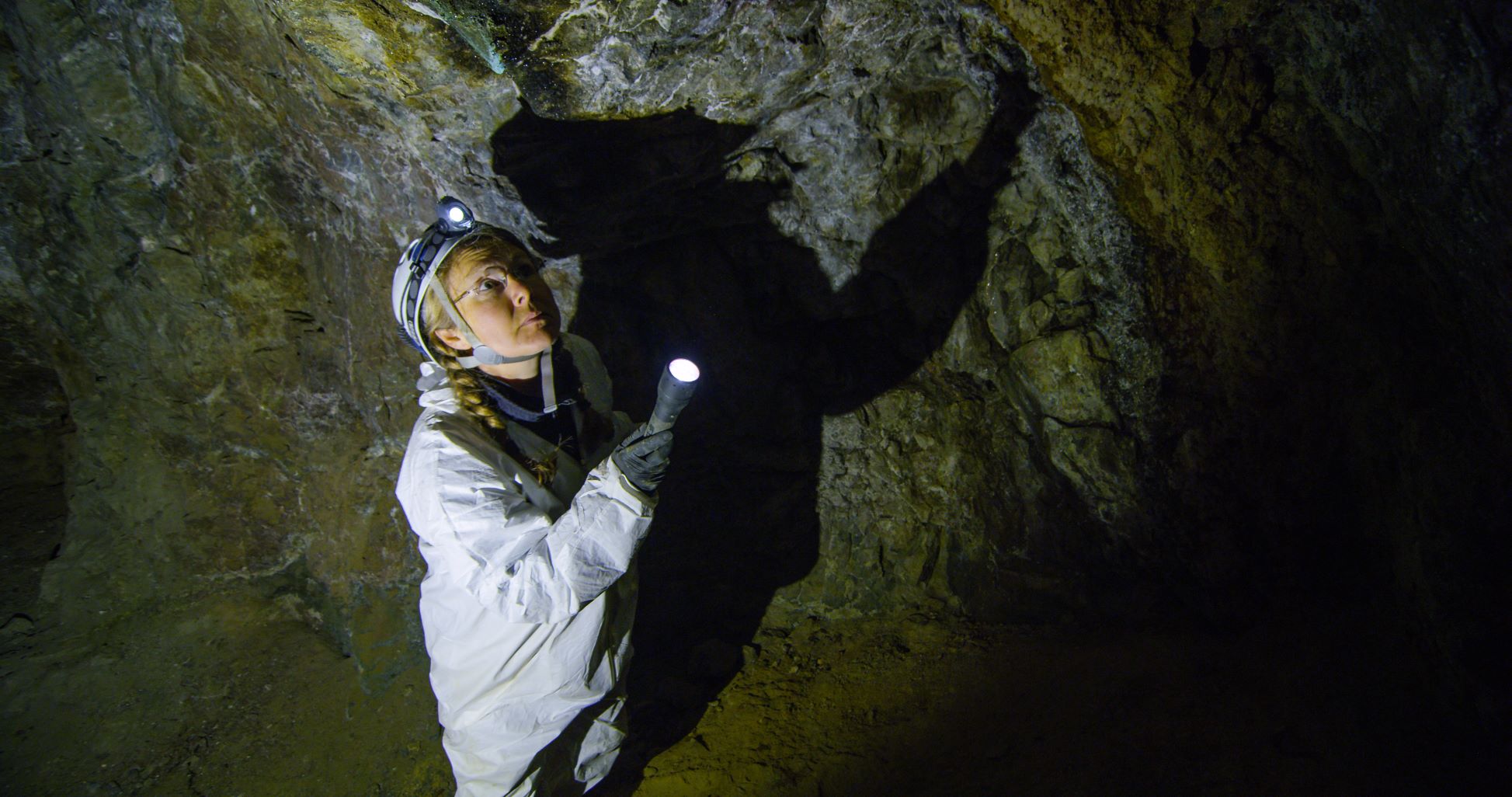BatCaver:
The Batcaver program is a unique collaboration between bat researchers and cave enthusiasts in Western Canada. It turns out bats and people who like caves have a lot in common!
The mission of the WCS Canada BatCaver Program is to identify and study hibernation sites for bats in Western Canada, using the resources of cavers and the public to expand our knowledge. It also creates a unique opportunity to educate cavers on bats in general, and on White-nose syndrome; how it is spread and how to decontaminate caver gear to prevent spreading.
While research in western Canada is limited, we do know that long-term hibernating species tend to prefer quiet locations deep in caves and mines with high humidity and temperatures that approach but do not go below freezing. The longest-duration hibernators are thought to be the Little Brown myotis, Long-legged myotis, Northern Long-eared myotis, Western Long-eared myotis, Yuma myotis and the Big Brown Bat. Due to the nature of the fungus that causes white-nose syndrome, long duration hibernators and those using high humidity caves will be most vulnerable to the disease. Some western bat species hibernate for shorter periods and may prove resistant to WNS.

The BatCaver program is a partnership between bat researchers and cavers in western Canada to gain more insight into the use of our caves and mines by bats, particularly in winter when they are most at risk of White Nose Syndrome (WNS), a fungal disease of hibernating bats. Little research has been undertaken regarding cave bat ecology in BC and Alberta. The goal of this program is to expand our knowledge by placing remote bat detectors and climate loggers in caves and mines and taking fungal samples, with the assistance of the caving community. Since the introduction of WNS into eastern North America, bat populations are being decimated while the fungus that causes the disease is spreading westward. It is imperative that we learn as much as we can about the wintering ecology of our cave bats in BC and Alberta in order to develop mitigation or prevention strategies for the disease. BC is host to the highest diversity of bats in Canada, with at least 16 species. Of these, at least half are thought to be vulnerable to WNS due to their tendency to hibernate in caves and mines. Two of our western bat species have recently been reclassified as endangered due to the high mortalities occurring in eastern Canadian hibernacula.
For more information, please visit the BatCaver website, here.